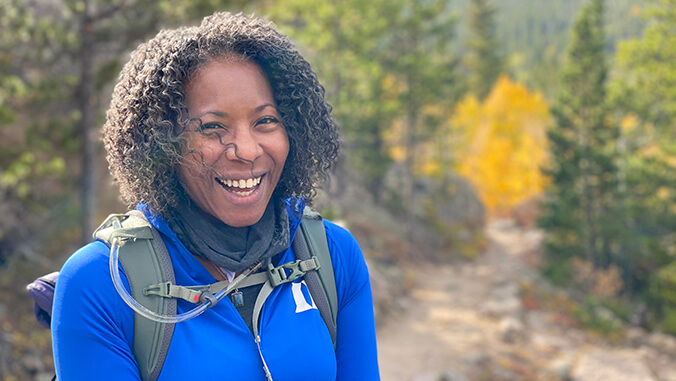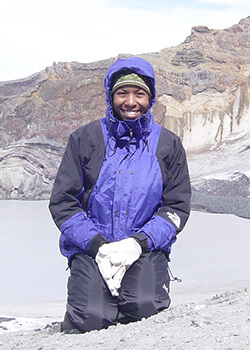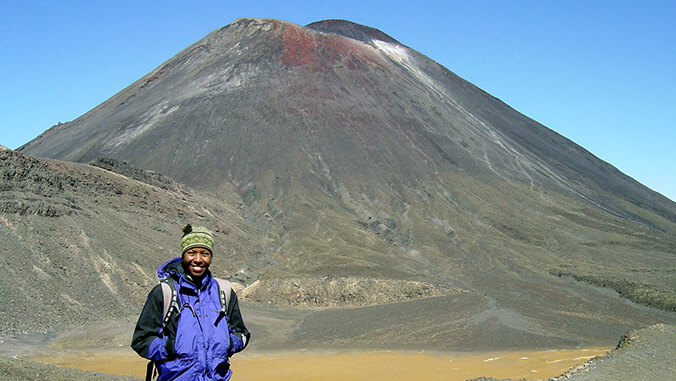
While the University of Hawaiʻi at Mānoa School of Ocean and Earth Science and Technology (SOEST) is typically credited with significant discovery and research, it is also recognized for helping students, faculty and staff discover and pursue their lifelong goals.
UH Mānoa alumna Aisha Morris is one of them. She found her calling of advancing inclusivity in science during her time as a graduate student at SOEST, which ultimately led her to become a program director for the National Science Foundation’s (NSF) Directorate for Geosciences (GEO).
Morris has been an NSF GEO program director since October 2018. In her role, she helps facilitate the funding for research, manages proposal reviews and makes compelling arguments to division directors on why a proposal should receive financial support.
Additionally, Morris works with a team to develop funding opportunities for people nationwide. When recommending projects to be funded, she works to ensure that taxpayer dollars are being responsibly stewarded and that local communities are not harmed from the research being conducted.
“I work with this great core team, and we develop things that can benefit the community when it seems like something they really need, or something that really needs funding to be accomplished,” said Morris. “A lot of the questions that we’re asking [in science] have real life impacts on people’s lives. I really want to ensure that the people that are being impacted, even if they’re not necessarily doing the research, are still being involved in the decision making.”
SOEST catalyst

Morris earned her master’s in marine geoscience (‘03) and her PhD in planetary geoscience (ʻ08) from UH Mānoa. While at SOEST, she developed a project to examine the different surface roughness of pahōēhōē (smooth) lava flows on Kīlauea and took numerical measurements that could potentially be used to determine different lava flows on other planets.
“It was huge to be able to come to SOEST which had super strong programs and gave me the ability to get both my master’s and PhD, and Kīlauea was just a 45-minute plane ride away to do some field work on the volcano,” said Morris. “It was just a great opportunity to study the things that I thought were going to be really cool.”
Morris also took part in SOEST open houses where Oʻahu schools and families could tour the facilities and perform experiments with the SOEST students, faculty and staff.
“This was one of the things that helped catalyze my interest in doing those kinds of activities that allowed me to engage, to connect with the community, to connect with students who maybe never thought about geoscience as something they could pursue,” said Morris. “It was one of the great experiences I had when I was at SOEST.”
In addition to her desire to do outreach, Morris also found motivation to make the geoscience community more inclusive.
Morris shared, “While I was there, I started to notice that there weren’t a lot of people of color who do geoscience, which was really odd, even in the department. At the time that I was there, the department wasn’t representative of Hawaiʻi. I liked the research, but the thing that was really driving me more was trying to address these disparities that we’re seeing here.”
Morris has experienced different work environments, from doing science policy work with the U.S. House of Representatives to creating internship programs for students at UNAVCO in Boulder, Colorado. She credits her geoscience training from SOEST with informing her on how to interact with students, communities and research projects.
Puwalu Forum
UH Mānoa faculty, staff and students will have the opportunity to hear sage advice from Morris and other NSF representatives during a Faculty Puwalu Research Forum hosted by the Office of the Vice Provost for Research and Scholarship. NSF will be presenting May 2–4, 2023 to discuss broadening participation in STEM, NSF funding opportunities and proposal tips and more.
For more information and to register, visit the NSF forum event page.


